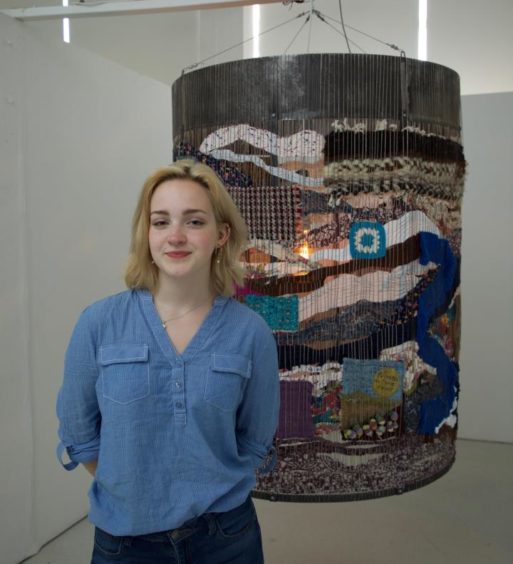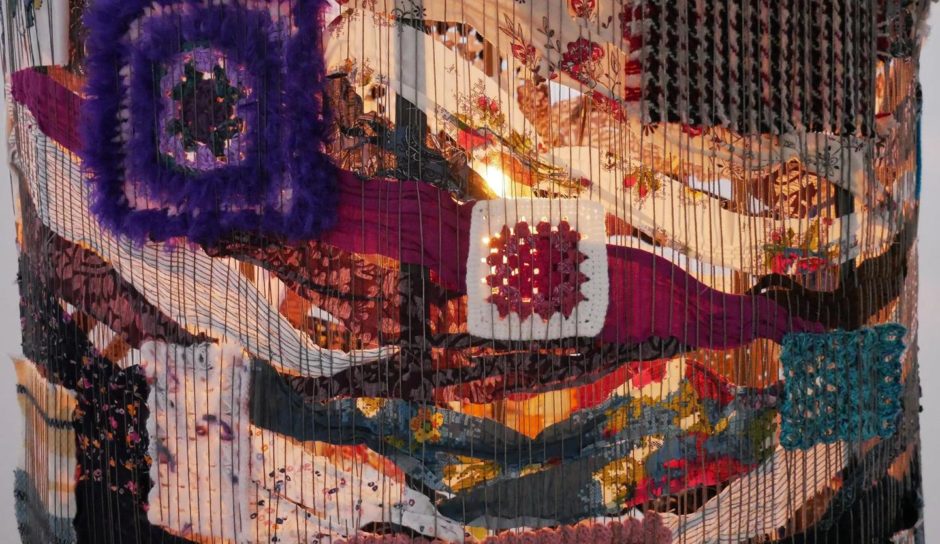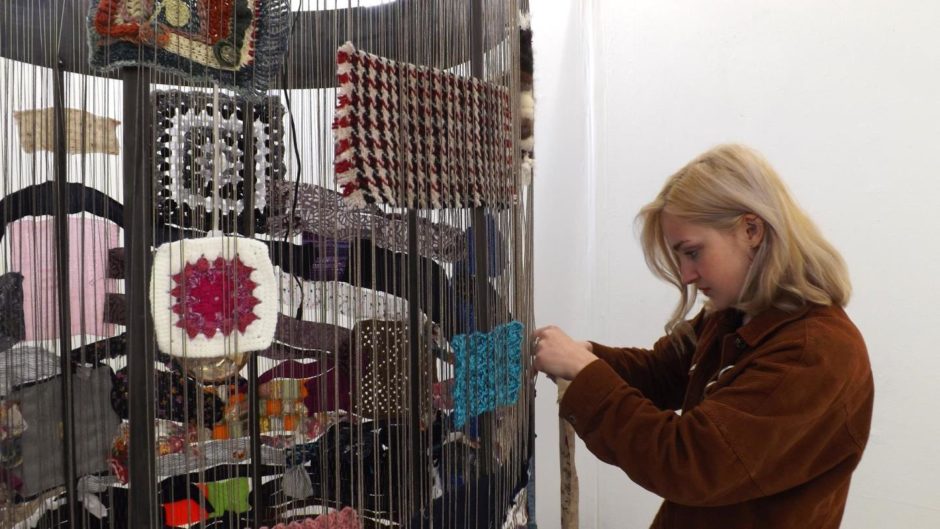Doric has always been woven in the life of student Kate Wilson – so it is only fitting she is weaving the north-east dialect into an ambitious art project for a prestigious university degree show.
Kate, from Sauchen, has created Wyvin Wyes, or Weaving Ways, bringing together both spoken word and crafters’ creations to celebrate the Doric tradition’s heritage and also as a statement of where it stands now.
Her piece will feature in the Duncan of Jordanstone College of Art and Design Graduate Showcase 2021, launched online on Friday June 10 by the University of Dundee.
Kate, who is a graduating fine art and philosophy student, describes Wyvin Wyes as a “big beautiful lampshade” with Doric voices emanating from its circle of craft – and hopes to be able to bring it to the north-east for people to see and enjoy.
She said the idea for weaving Doric memories started when she studied abroad for a semester in Canada.
Aware of Scottish identity – especially Doric
“I suddenly became really conscious of my identity as a Scottish person. When I came back I didn’t lose that curiousity, I maintained it. I was particularly interested in my accent and more specifically the dialect of Doric,” said Kate.
“I have always loved Doric, but even among my friends here (in Dundee) – Scottish people – lots of them have never heard of it and it’s something that’s been such a big part of my life. So I thought why do I not celebrate that?”
You sit on your granny’s knee and you learn how to make and craft, but you also pick up language and stories.”
Kate wanted to go beyond the language and recordings of Doric speakers, but find a more creative celebration of the north-east’s rich traditions by adding craft and craft-making to her creation.
“You sit on your granny’s knee and you learn how to make and craft, but you also pick up language and stories that way. I wanted to combine these two together,” she said.
Her starting point was to record Doric speakers, both ordinary folk and more well-known names. Poet, novelist, story-teller and singer Sheena Blackhall read some poetry for Kate’s project, for example.
Doric makes performers out of everyone
Kate also called on friends from her days with the north-east’s Fleeman Productions, who stage plays by the acclaimed Doric playwright Charles Barron. She also recorded ordinary Doric speakers, including crafters.
“I was just reminded that Doric is inherently an expressive language,” said Kate. “It’s good for story telling, there are words that mean something in Doric that would take so many more words to explain in English.
“When I started with these professional poets and performers I realised that Doric turns many people into these things, as people express themselves through the mode of Doric. I wanted to capture what it is now, that it’s not just the performers who speak it.”
I was getting everything from a little bit of crochet… to loom weaving from a 92-year-old woman in Braemar.”
Alongside collecting the spoken word, Kate appealed on Facebook for crafters of Aberdeenshire to send in samples of their work, to be woven into Wyvin Wyes.
“I set out a call for Doric crafters. When I say Doric, what I really want to do is celebrate these processes and practices of language and making as they are now in Aberdeenshire. It is no longer simply Doric speakers, it is people who have come into the area, and that’s worth celebrating,” she said.
“When I said send me a typical piece of work, I was getting everything from a little bit of crochet someone taught themselves how to do to huge bits of freehand weaving. I was getting loom weaving from a 92-year-old woman in Braemar. I view each of these bits of craft as an individual voice. It’s that person’s heritage, in just the same way as language, it tells a story.
Celebrating traditions as they are now
“So I combined these all together in this big woven structure that was emanating all these voices to really kind of encapsulate Doric heritage as it is now and as we can celebrate it now.”
Kate says her Wyvin Wyes is also a work in progress, much the same as Doric itself.
“My weaving can be taken down and taken somewhere else, added to and made into a different iteration. It’s about continuation.”
It’s always been about celebrating these traditions as they are now, for all the people they include.”
Katie, who is now applying for a Masters course in design for business, is looking forward to Wyvin Wyes being seen as part of the Duncan of Jordanstone degree show, which will run online until June 21.
But she also hopes to bring it home to the north-east and has reached out to galleries in Aberdeen and Aberdeenshire, with the hope of showcasing it here so people can enjoy her celebration of Doric culture first hand.
“It’s not about preserving the ways of the past. It’s always been about celebrating these traditions as they are now, for all the people they include.”


